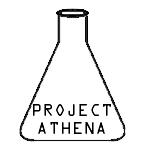
Elementary School
Megan Helpa is not your stereotypical scientist.
Meet Megan Helpa.
She has long, wavy hair and short, little legs, standing less than five feet tall. Megan wears no lab coat or goggles, but she is a science extraordinaire, nonetheless. This year, Megan is a sixth-grader at Wilson Middle School in Fishersville, Virginia.
Though she is willing to share her passion for science, she admits that her interest wasn’t always so strong.
Listen as Megan explains why she didn’t always love science.
This incident happened about three years ago, when Megan was in third grade. A couple summers after, Megan went to Space Explorers Camp at James Madison University and her relationship with science was forever changed.
Shanil Virani is both the director of Space Explorers Camp and the John C. Wells Planetarium at James Madison Univeristy. His main goal is to “inspire and engage the scientists and engineers of tomorrow.” To do this, Virani aims to change societal stereotypes and attitudes toward science.
But getting Megan to Space Explorers Camp took some convincing from her mom, Anita Helpa.
Megan’s classmates sometimes call her a nerd, but she says it makes her feel good because being called smart is not an insult. In fact, Megan’s camp counselor Physics Major Jeff Storey says, “Space Explorers Camp must seem like a beacon to those who enjoy science and are nervous about others’ impression of them. All of the counselors and staff consider themselves nerds, and are proud of it, and they are cool, successful and fun people. We’re great! And Megan could see that. She’s one of us.”
Megan is insulted by the way her peers think all scientists have “nerd glasses with messy hair and a pencil behind their ear.”
On the first day of Space Explorers Camp, campers were encouraged to draw a scientist. Nearly everyone subconsciously drew a male character, but Megan is actually inspired by the presence of female leaders at JMU’s space camp.
Listen to Megan’s mom talk about how that experience has helped further Megan’s relationship with science.
Virani and his staff host public shows and “star talks” at the planetarium every Saturday, as well as “star parties,” once a month. Star talks are more frequent because they can be done on the dome in the planetarium. Virani or a staff member will bring up the night sky on the dome and highlight the constellations that one should be able to find that night. Star parties, however, take place at Astronomy Park on JMU’s campus, equipped with telescopes and crowds of several hundred people.
From attending camps and “star parties” to listening to guest speakers and “star talks” at JMU, Megan’s primary interest in science is aerospace. Megan spends a tremendous amount of time studying space outside of the classroom. Hear her talk about a few of her favorite topics.
Ms. Helpa, a single mother, appreciates the opportunity that Megan has to be able to participate in programs outside of the classroom, like Space Explorers Camp and planetarium shows.
Not so long ago, Ms. Helpa sent the director of the planetarium and Space Explorers Camp a photo of Megan’s latest report card. She’ll tell you about the grades she’s getting in her science class.
As a final thought, Storey says, “I simply don’t understand how a prejudice like ‘girls aren’t smart enough to do science’ came to be. Perhaps that is because, at any moment, I can call, text, or Facebook message 25 women who are at least as smart, and probably way smarter than me. The fact is that women are as intelligent and capable as men. And when we lose a potential STEM major, we miss out on all the good they could have accomplished over their career. And we simply can’t afford that.”
